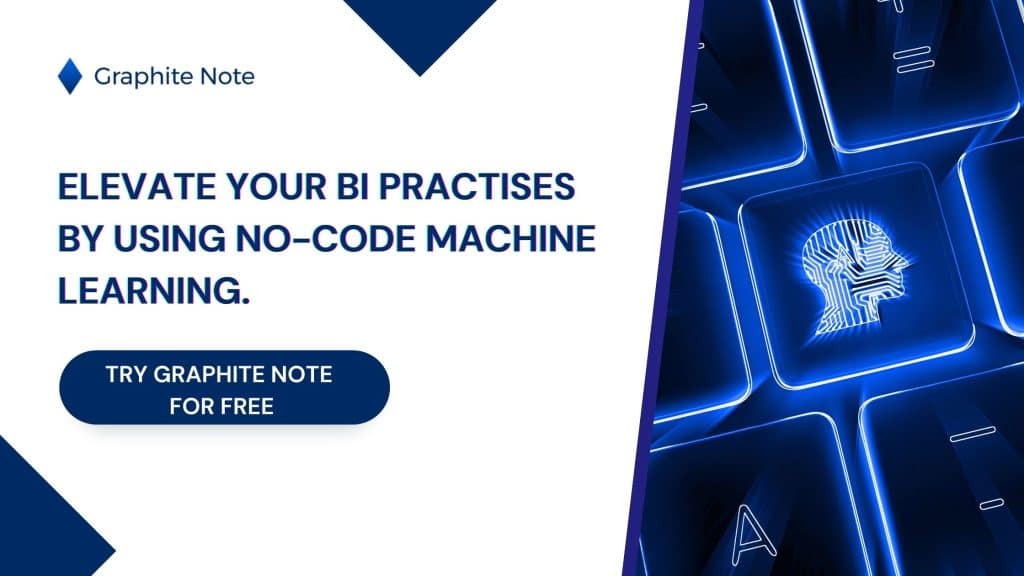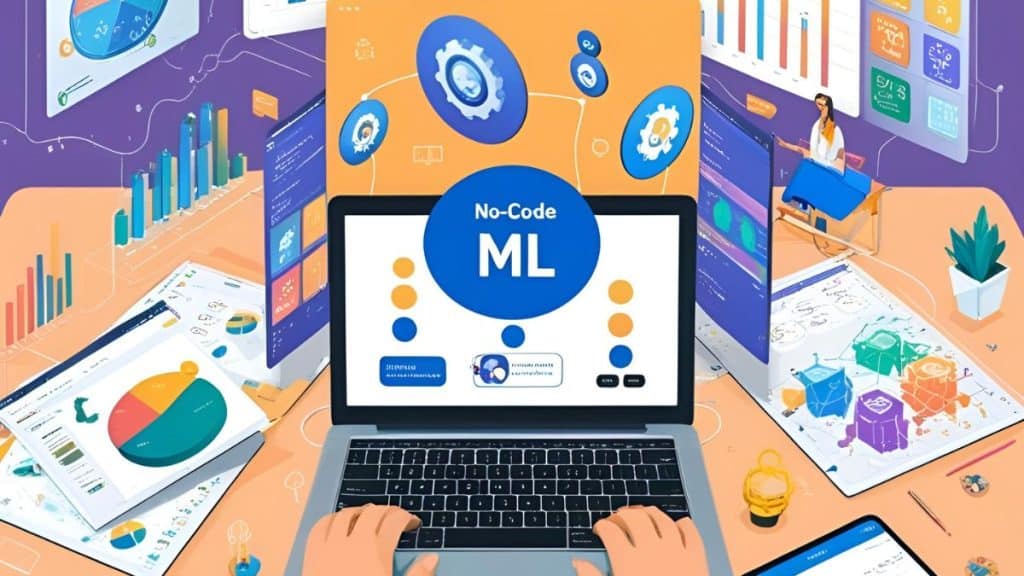Business leaders are always on the lookout for innovative ways to stay ahead of the curve. Integrating Artificial Intelligence (AI) and Business Intelligence (BI) can help. AI and BI offer a perfect partnership that can change the way your business operates. Combining BI and AI helps you make better decisions and achieve your business goals.
Understanding the Basics: AI and BI
Artificial Intelligence (AI) and Business Intelligence (BI) are two distinct yet interconnected fields. AI and BI play important roles. AI and BI shape the future of technology and business operations. AI develops computer systems capable of mimicking human intelligence to perform tasks autonomously. BI revolves around the collection, analysis, and interpretation of data. BI and AI can support strategic decision-making.
What is Artificial Intelligence (AI)?
Artificial Intelligence (AI) refers to the simulation of human intelligence in machines. AI systems can interpret, understand, learn, and make decisions based on data. AI is a broad field with various applications. These include natural language processing, machine learning, and computer vision. AI can continuously evolve and improve its performance through machine learning algorithms. These algorithms enable AI systems to analyze vast amounts of data. AI can identify patterns, and make accurate predictions. AI applications revolutionizes various industries and reshape the way we interact with technology.
What is Business Intelligence (BI)?
Business Intelligence (BI) analyzes business data. Business Intelligence includes technologies, applications, and practices. Business Intelligence translates business data into actionable insights. BI gives you a comprehensive view of your business’ data. This empowers you with valuable information to support your decision making. Business Intelligence tools have features that help with data analysis and data visualization. Modern Business Intelligence tools collect, organize, and analyze data from various sources. These can include databases, spreadsheets, and cloud services. Traditional Business Intelligence tools have customizable dashboards, interactive reports, and intuitive visualizations. A business intelligence platform offers a user-friendly interface that facilitates data-driven decision-making.
The Intersection of AI and BI
The combination of BI and AI has a profound effect on business decisions. BI enables organizations to gain valuable insights from data. AI enhances decision-making through advanced analytics and automation. By leveraging these technologies, you can make informed decisions. You can drive innovation, and use competitive intelligence. You can stay ahead using your business information. Your business insights and business analytics help you monitor business performance, optimise your business process, and make strategic decisions.
How AI Enhances BI Capabilities
AI augments BI by enabling advanced algorithms to process vast amounts of data at scale. This combination helps you uncover hidden patterns, and deliver predictive and prescriptive analytics. With AI-powered BI, you get a deeper understanding of your company data. This enables you to make more accurate forecasts and proactive decision-making.
AI can enhance the speed and accuracy of data processing in BI systems. AI can automate repetitive tasks and optimize data workflows. AI-powered BI solutions can improve operational efficiency and reduce human error. Integrating AI into BI empowers you to make data-driven decisions.
The Role of AI in BI Decision Making
In the realm of decision-making, AI can revolutionize the BI landscape. AI algorithms can provide valuable recommendations, automate routine tasks, and streamline decision-making processes. AI-powered BI tools can analyze market trends. AI-powered BI tools identify emerging business opportunities, and suggest optimal strategies. By using AI in decision-making, you can capitalize on business opportunities. AI can enable real-time decision-making in BI. AI continuously monitors data streams and detects anomalies. AI can alert decision-makers to risks or opportunities. This proactive approach enhances your agility and helps you stay ahead of the curve.
Benefits of Integrating AI and BI in Business
Integrating BI and AI holds a range of benefits:
- Enhanced customer insights: AI algorithms can analyze customer data collected through BI systems. This gives you a deeper understanding of customer behavior, preferences, and trends. You can personalize marketing strategies and improve customer service. This enhances customer satisfaction and loyalty.
- Improved efficiency: AI-driven automation reduces manual effort. This enables your team to focus on high-value tasks. AI-powered BI streamlines data processing, enabling faster and more accurate insights. With improved efficiency, you can optimize resource allocation and streamline workflows. This boosts business productivity levels.
- Enhanced data analysis: AI algorithms excel at uncovering patterns and correlations within vast datasets. This enables you to make data-driven decisions with increased confidence. AI-powered BI platforms offer intuitive data visualization capabilities. These make it easier for you to interpret complex information. You can easily spot trends or anomalies.
Forecast capabilities: You can forecast future trends and outcomes with greater accuracy. AI algorithms analyze historical data. This helps you identify patterns. Those patterns may indicate future market trends, customer behaviors, or operational challenges. This predictive capability enables you to be proactive. You can adjust your strategies and operations. You can stay ahead of the competition and capitalize on emerging opportunities.
Challenges in AI and BI Integration
Integrating AI and BI is not without its challenges. These challenges include:
- Data privacy and security: When you integrate BI and AI, you will be processing large amounts of company data. You need to ensure rigid compliance with data privacy regulations. You must establish transparent data practices and consent mechanisms. This ensures customer data is handled responsibly. You must use robust security measures, encryption protocols, and ethical AI frameworks. This protects sensitive information and maintains customer trust.
- Technical and operational hurdles: You need to invest in advanced technologies when combining BI and AI. You also need to ensure that your team has the necessary skills to use these tools. You need to ensure collaboration across your teams. Shared business analytics should enable better collaboration across your teams. You will also need to overcome technical challenges. These can include data integration, interoperability, and model scalability.
Future Trends in AI and BI
As AI and BI combine, future trends indicate even more exciting possibilities.
Predictive Analytics and Machine Learning
The convergence of AI and BI is propelling predictive analytics to new heights. You can analyze historical data. You can apply machine learning algorithms, and generate accurate forecasts, enabling proactive decision-making. Predictive analytics powered by AI and BI enables you to anticipate market trends. You can then optimize resources, and gain a competitive advantage in dynamic industries.
The Rise of AI-Powered BI Tools
AI-powered BI tools are gaining popularity, driving the democratization of data-driven decision-making. These tools empower you with self-service analytics capabilities. This enables you to explore data, create interactive dashboards, and generate valuable insights. Tools like Graphite Note further simplify AI and BI integration. This makes it accessible to organizations of all sizes.
Further Integration
There are other future trends that will shape the AI and BI landscape. This includes the integration of natural language processing (NLP) capabilities into BI systems. NLP enables you to interact with data using natural language. This makes it easier for non-technical users to query and analyze data. This will further enhance the accessibility and usability of data-driven insights. Another emerging trend is the use of AI in data preparation and cleansing. Data quality is crucial for accurate analysis. AI can automate the data cleaning and preparing processes.
This helps you save time and effort in data cleansing. This ensures that the insights derived from BI systems are based on reliable and accurate data. AI and BI integration also enables further development of AI-powered virtual assistants. These are specifically designed for business intelligence. Virtual assistants will be able to understand complex queries. Virtual assistants can provide real-time insights, and make recommendations. This will revolutionize the way users interact with BI systems. This makes data-driven decision-making even more intuitive and efficient.

The partnership between AI and BI presents an important opportunity for you to harness the power of your company data. Ready to transform your business intelligence with the power of AI? Graphite Note can elevate your data analytics capabilities. Graphite Note can empower your team to predict and shape the future. Experience the simplicity of our no-code machine learning platform. You can turn business data into actionable insights and strategic actions in minutes. Don’t let the global shortage of data scientists hold you back. Enjoy the next generation of BI with Graphite Note.
Request a Demo and join the forefront of predictive and prescriptive analytics.





